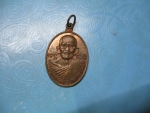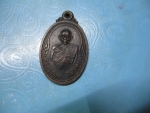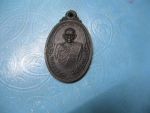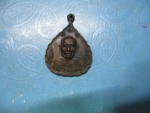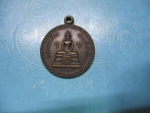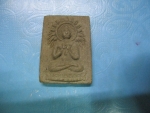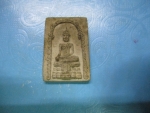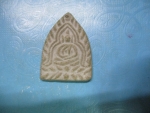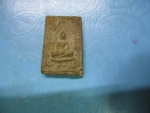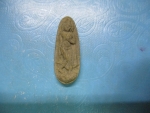หมวดหมู่สินค้า
พระเครื่องเขี้ยว/ฟัน ปลาวาฬ (Sperm Whale Tooth)

สภาพสินค้า :
สินค้ามือสอง
ราคา :
0.00
บาท
วันที่เริ่ม :
10 ก.พ. 2553 23:14:31
วันที่อัพเดท :
14 ก.ย. 2553 17:23:04
ip :
125.25.49.xx
ข้อมูลร้าน
ร้าน :
ชื่อผู้ขาย :
-
จังหวัด :
-
จำนวนสินค้า :
0 ชิ้น
คนเข้าชม :
-
อัพเดทร้าน :
-
เปิดร้าน :
-

รายละเอียดสินค้า
*สำหรับงานสะสมสวยๆชิ้นนี้ จัดว่าหายากมากชิ้นหนึ่ง เป็นงานที่เรียกว่า Netsuke (เน็ทซูเกะ) ซึ่งเป็นศิลป์การแกะสลักของชาวญี่ปุ่น ศิลป์นี้แพร่หลายและได้รับความนิยมมากในต่างประเทศไม่ใช่เฉพาะในญี่ปุ่นเท่านั้น แต่แพร่หลายไปในชาติยุโรปและตะวันตกอย่างรวดเร็ว
จุดเด่นของงานลักษณะนี้คือ การสลักเสลาวัสดุ ไม่ว่าจะเป็นเขี้ยว งา ไม้หรือวัสดุเนื้อแข็งต่างๆให้เป็นลวดลายต่างๆอย่างวิจิตพิสดาร (ดูรูปตัวอย่างงานจากต่างประเทศประกอบ) การแกะก็ใช้วิธีสลักแล้วสร้างลายลวดลายต่างๆซึ่งต้องใช้ความเพียรเป็นอย่างมากในการทำให้เกิดภาพและเกิดมิติในชิ้นงาน ลักษณะของงานเน็ทสุแกะหรือเน็ทซูเกะนี้ส่วนใหญ่จะมีเอกลักษณ์เฉพาะตัวที่โดเด่นมาก เช่นการทำให้วิจิตรเกินจริง การแกะสลักรูปสัตว์สิ่งของให้เหนือมิติคือมองได้หลายแง่มุม บางชิ้นมองดูเหมือนสัตว์ในเทพนิยายคือไม่สามารถระบุได้ว่า เป็นตัวอะไร หรือถ้ามองออกว่าเป็นตัวอะไรก็จะมีท่าทางหรือการแกะที่ค่อนข้างจะเกินธรรมชาตืของสัตว์หรือสิ่งของเหล่านั้นเป็นจริง
สรุปก็คือ งานแกะ Netsuke นี้ เป็นงานแกะที่ต้องใช้จินตนาการสูง เน้นให้เกิดการมองในมุมต่งๆที่ให้ความเพลิดเพลินกับเจ้าของงานชิ้นนั้นนั่นเองและส่วนใหญ่เน้นความวิจิตรพิศดาร(ดูตัวอย่างงานประเภทนี้ในช่องถัดไป)
ดังนั้นงานศิลป์นี้จึงมีราคาค่อนข้างสูงในท้องตลาดดังจะเห็นได้จากราคาการตั้งจำหน่ายตามร้านขายของเก่าประเภท Antique หรือ Vintage ต่างๆ หรือแม้กระทั่งการตั้งประมูลในจอทั่วไป
สำหรับงานชิ้นนี้ จัดว่าเป็นงานที่สวยมากอีกชิ้นหนึ่ง เพราะงามพร้อมด้วยคุณสมบัติอันพึงมีของศิลป์ระดับ Vintage โดยแท้ คือมีลวดลายที่ชัดเจน ที่เรียกว่า Pattern หรือแบบเฉพาะตัวนั่นเอง มี Patina คือมีคราบเก่าที่ชอนไชใยหยักให้เห็นทั้งชิ้น คือเก่าและมีราศีขึ้นตามธรรมชาติโดยแท้ และมีความเก่าของวัสดุที่หายากคือเขี้ยวหรือฟันใหญ่ปลาวาฬ ( Sperm Whale Tooth )อายุนับร้อยปีนั่นเอง
ของดีมีชิ้นเดียวแบบนี้มีคุณค่าและคู่ควรกับนักสะสมที่มองการณ์ไกลโดยแท้ครับ.
(ลองดูภาพประกอบจากนอกพร้อมกับเรื่องของงานนี้กันดูนะครับ)
________________________________________
What is Netsuke?
Japanese people used to hang their everyday articles such as small money pouches, tobacco pouches, and seal or medicine cases (inro) from their sash or belt (obi), because the Japanese traditional garment (kimono) has no pockets. To prevent it falling to the ground, the hanging object(s) (collectively called sagemono) was attached to a small toggle with a cord, and the toggle is called netsuke.In general, the netsuke has the following physical characteristics or requirements:
To serve as a toggle attached to hanging objects, it has a hole or a channel (himotoshi) to put the cord through.
To be worn as an accessory or held in hands, it doesn't (or shouldn't) have parts that can easily be broken or might catch the garment.
To be worn at the waist, it is comparatively small. It is generally about as large as you can hold in your hand, but it could be a bit smaller or larger than that.
In early times, netsuke flourished as a part of the ensemble with a small pouch and/or an inro and cord-tightening bead (ojime). Nowadays, many netsuke are exhibited, traded, collected as independent objects, but they were originally attached to sagemono, some sets of which you might also see in museums, private collections, galleries, and publications.
________________________________________
History of Netsuke
It is not clear as to when netsuke came into use, but some netsuke are depicted in paintings from around the beginning of the 17th century, suggesting that the netsuke was already in use by then.
Though first netsuke were probably simple pieces of wood or whatever was useful as a toggle, it developed into a craft art with great artistry and playful ideas through the Edo period (i.e., from the early 17th century through the mid 19th century). Netsuke in a considerably wide range of subjects and materials were made by thousands of artists; early craftsmen specializing in other fields such as metalwork or sculpture and made netsuke as a hobby, while many of the later carvers devoted all their career to netsuke production.
However, around the mid 19th century, the popularity of netsuke started to wane due to the changes in fashion and cultural situations. A relatively small number of netsuke artists continued to create netsuke of high standard through the mid 20th century.
From the mid 19th century onwards, westerners became interested in netsuke. A large quantity of those miniature carvings began to be exported to the West. Since then, netsuke have been actively traded, collected, and studied by westerners, while they attracted little attention of the majority of Japanese people.
Netsuke made until about that time are called 'antique netsuke,' while those carved later are referred to as 'contemporary netsuke.' This latter term means more than just 'netsuke made in modern time': some western collectors and dealers have encouraged Japanese artists to create netsuke with their original ideas and modern sense, not just to imitate antique pieces. Recently, the number of netsuke artists have been growing in Japan, and in other countries as well, and there are approximately one hundred Japanese and non-Japanese artists whose works regularly appear in sales and exhibitions.
Today, the netsuke, both antique and contemporary, is internationally appreciated as a unique and fascinating art form. At present, it might still be better known in the West, but there is a growing interest among the Japanese (some Japanese actually carry netsuke by attaching them to their cell phones).
The netsuke is still evolving, and you can explore this exciting art form by just looking at them, holding them in your hand to enjoy the feel, collecting them, studying them, and even carving them!
________________________________________
Types and Materials of Netsuke
Katabori Netsuke. Figural, three-dimensional sculpture made of a wide variety of materials, such as various kinds of wood and ivory, pottery, metal, lacquer, amber, black or red coral, glass, and so on.
Manju Netsuke. Round, flat netsuke named after the bean-paste cake that are popular in Japan. Mostly in ivory or wood, often with relief carving or other types of decorations such as lacquer and inlay of other materials.
Kagamibuta Netsuke. The combination of the lid and the bowl: the lid is usually a metal disc bearing relief or engraved carving, and the bowl is made of ivory or wood.
Ryusa Netsuke. Manju-shaped netsuke with openwork design.
Hako Netsuke. Box-type netsuke often decorated with lacquer or inlay.
Men Netsuke. Netsuke in the form of masks.
Sashi Netsuke or Obi-Hasami. The long, slender netsuke in three-dimensional carving or with relief carving. It was worn thrust through the sash.
Obiguruma or Obiguruwa. Netsuke shaped like the bracelet, through which the sash (obi) goes.
Dual-purpose Netsuke including Hihataki Netsuke. Netsuke having another function in addition to being a toggle, such as sundial. Hihataki Netsuke is the bowl-shaped type used as ash trays for pipes (kiseru).



